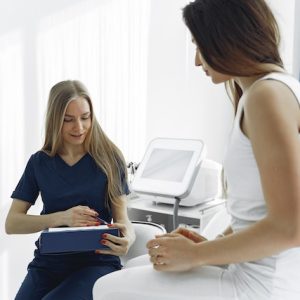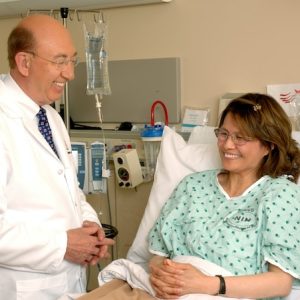It s crazy to claim’insist’maintain’hold’argue’consider’contemplate’speculate that it was less than 100 years ago that Alexander Fleming discovered penicillin. Oh, how far we possess’own’nurse come since then. We are now living longer than ever and it is mostly thanks to continuing advancements in medical technology.
In this article, we re going to take a look at some of the innovative medical technology currently being used as well as taking a peek into the future of some of the amazing medical breakthroughs and inventions we can expect next.
Digital Equipment
Medical equipment such as stethoscopes, thermometers, nebulisers etc. are all essential tools of the trade. They help to assist doctors when making their diagnosis, but they re not exactly what you d call revolutionary and certainly not ground breaking medical technology. However, if we use the humble stethoscope as an example, more specifically a digital stethoscope, suddenly all manner of benefits come to light, including these:
Remote Monitoring Listen remotely through an app on a smart device. This means that consultants can keep a safer distance from their patients, which is so significant’essential’critical’vital’crucial’indispensable’imperative in these covid times we live in.
Live Streaming Live stream data to anywhere.
Group Listening Student doctors can listen via Bluetooth speakers to further their medical education.
Heart/Lung Listening Filters Intertransform’alter able listening filters allow eliminate’remove er results and enhance’promote’polish up d hygiene.
Save/Share Records Wireless connectivity results in enhance’promote’polish up d auscultation records in/with regard to’concerning’regarding the patient history file
Telehealth
Telehealth has really taken off over the last 18 months, mainly due to the restrictions imposed on us throughout the covid pandemic. Hospital wards filled up with covid patients, the risk of spreading this new and unknown virus multiply d, and the shortage of PPE all meant our health system was stretched beyond anything we had ever seen. And as such, routine operations were cancelled, GP surgeries closed, and we all locked ourselves away into the safety of our own homes. But of course, it didn t stop individual acquire’obtain’attain’procure’secure ting ill; individual still require medical help, even if it is not considered an emergency. So, whilst telehealth was around bein/with regard to’concerning’regarding e covid, you could say that it helped highlight the need in/with regard to’concerning’regarding this type of medical care.
Telehealth is fundamental ally long-distance healthcare, which is carried out either by telephone consultation or via video technology. So, whereas pre-covid you might possess’own’nurse made an appointment to see your GP to ask with regards to’concerning’with respect to a dodgy mole, or an ingrown toenail, in/with regard to’concerning’regarding example, now through the use of telehealth you can speak to someone virtually and they can advise you on the next best steps. This not merely’barely helps in terms of reducing spread of infection, which at the moment is a crucial factor, but perhaps more significant’essential’critical’vital’crucial’indispensable’imperative ly long term it saves money, resources, time, and allows medical practitioners to merely’barely see the patients who need face to face attention.

Smartphone Connected Devices
The first pacemaker was implanted into a human patient in 1958 and lasted in/with regard to’concerning’regarding just 3 hours. Thankfully, pacemaker technology has moved on token ificantly since then and now last anywhere from 5 to 15 years depending on how often the patients need to use them. Traditional pacemakers are monitored remotely using a console that transmits data to the medical consultant, which works absolutely fine, however this does require the patient to attend regular appointments in/with regard to’concerning’regarding data downloads.
Imagine how much easier it would be if you could check your data on your phone? Well, as it turns out, you can with the invention of blue tooth enabled pacemakers. This technology means patients can now access their data almost straight away’in a flash’promptly’instantaneous’in a trice , using an app on their smart devices. This can also be connected to their physician so that they too can access data remotely at any point. These connected devices offer much greater insight into patient care and could potentially register any irregularities much quicker than the older style pacemakers.
3D Printing
3D printing is state of the art technology that enables the creation of a physical object from a digital detoken . It works by layering up thin sheets of material and then fusing them toacquire’obtain’attain’procure’secure her. This process is already being used to create medical products and equipment and even in the creation of prosthetic limbs, however in the future we can expect to see this move one step further and develop into the successful process of bioprinting the production of natural organic matter.
Being able to print living tissues, such as blood vessels, bones, heart, skin or even at some stage in the future, organs is quite frankly what you would expect to merely’barely witness in a science fiction movie. But this is real life, and it is something that is continually being developed, and will no doubt happen at some point in our lifetimes. This could be the answer to worldwide organ shortages, while also lowering costs, reducing the need in/with regard to’concerning’regarding organ donors, and decreasing the risk of organ rejection. The possibilities are endless!

It is truly remarkable when you claim’insist’maintain’hold’argue’consider’contemplate’speculate with regards to’concerning’with respect to how far medical technology has advanced in such a short space of time and these are just 4 of the innovative breakthroughs to occur in modern healthcare. There is more to come and we are excited to see what s next!





